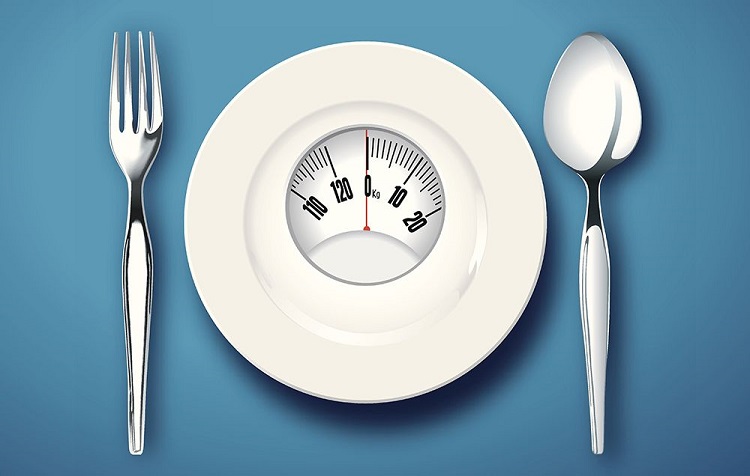
1. Introduction, to the Keto Diet
The ketogenic diet, commonly known as the keto diet has gained popularity in years due to its effectiveness in weight loss and overall health improvement.
By reducing your carbohydrate intake and replacing it with fats the keto diet prompts your body to enter a state called ketosis. In this state your body burns fat for energy of relying on glucose.
What is the keto diet?
The keto diet is characterized by its high fat nature, which compels your body to utilize fat as its main source of fuel rather than carbohydrates. It involves consuming foods that’re rich in fats, moderate in protein and very low in carbohydrates.
How does the keto diet function?
When you limit your carbohydrate intake your body shifts its energy source from glucose to fat. This metabolic change leads to the production of molecules called ketones in the liver by breaking down stored fat.
These ketones are then utilized by your body as an energy source resulting in weight loss and offering health benefits.
Advantages of following the keto diet
research supports advantages associated with adhering to a ketogenic lifestyle. These include weight loss, enhanced clarity, increased energy levels, reduced inflammation, within the body and improved blood sugar regulation.
The keto diet has also been utilized in the treatment of epilepsy, Alzheimers disease and specific forms of cancer.
To adhere to the keto diet it is necessary to decrease carbohydrate intake while increasing the consumption of fats. This entails avoiding foods, like bread, pasta, rice and sugar; instead focus on incorporating meat, fish, eggs, nuts, seeds and carb vegetables into your meals.
Here are five essential tips for following the keto diet:
1. Stay adequately hydrated by drinking amounts of water.
2. Include a variety of fats in your diet such as avocados, olive oil and coconut oil.
3. Ensure you obtain protein to support muscle growth and repair.
4. Make sure to incorporate an abundance of vegetables into your meals to ensure you receive essential nutrients.
5. Monitor your ketone levels using urine strips or a blood ketone meter.
Furthermore integrating fasting into your routine alongside the keto diet can further optimize burning outcomes.
Intermittent fasting involves alternating between periods of fasting and eating which aids in maximizing your bodys ability to burn fat effectively.
What is intermittent fasting?
It is an eating pattern that involves cycling, between periods of fasting and eating. There are a few ways to practice fasting. One method is the 16/8 approach, where you fast for 16 hours and then have an 8 hour window to eat. Another method is the 5;2 approach, where you eat normally for five days and then restrict your calorie intake for two days.
So how does intermittent fasting actually work?
Intermittent fasting works, by allowing your body to enter a fasting state, which can optimize burning and improve how your body responds to insulin. During the fasting period your body uses up its glycogen stores. Starts burning stored fat for energy.
There are benefits associated with fasting. These include weight loss improved insulin sensitivity, increased autophagy (the process in which old cells are broken down and recycled) and reduced inflammation.
Additionally intermittent fasting may also help enhance brain health and lower the risk of diseases.
If you want to incorporate fasting into your routine start by choosing a method that suits you best. Gradually increase the length of your fasting periods over time.
You can begin by fasting for around 12 14 hours. Gradually extend it to 16 18 hours.
Remember that, during the fasting period it’s alright to consume water, black coffee or tea as they can help curb hunger.
Here are some valuable tips, for fasting:
1. Begin with a fasting period. Gradually extend the duration as you become more comfortable.
2. Stay properly hydrated by drinking an amount of water throughout your fasting window.
3. Listen to your body. Adjust your fasting schedule accordingly to meet your needs.
4. When breaking your fast opt for a rounded meal that includes protein, healthy fats and vegetables.
5. Consistency is key when it comes to fasting in order to maximize its benefits.
Additionally if you want to enhance your burning results consider incorporating High Intensity Interval Training (HIIT) into your exercise routine. HIIT involves alternating bursts of exercise with periods of rest or low intensity exercise.
What is HIIT?
High Intensity Interval Training (HIIT) refers to a type of workout that involves intervals of intense exercise followed by periods of rest or less strenuous activity.
This approach efficiently burns calories and fat by elevating both heart rate and metabolism.
How does HIIT work?
During the exercise intervals, in HIIT you push your body to its capacity, which leads to increased heart rate and metabolism levels.
This results, in an increased amount of calories burned both during and after the workout as your body actively works to recover and replenish oxygen levels.
Benefits of HIIT
HIIT has been proven to offer advantages, including fat burning improved cardiovascular fitness, increased muscle definition improved insulin sensitivity and a boost in human growth hormone (HGH) production.
Furthermore it is a time way to exercise since sessions can be as short as 10 20 minutes.
How to include HIIT
To incorporate HIIT into your exercise routine exercises that raise your heart rate and perform them at intensity for a brief period of time. Follow this with a period of rest or low intensity exercise.
Repeat this pattern for a duration of 10 20 minutes based on your fitness level.
Top 5 tips for HIIT
Begin with a up session to prepare your body for the demanding exercises.
Opt for exercises that target muscle groups to maximize calorie burn.
Gradually increase the intensity and duration of your HIIT workouts over time.
Pay attention to your bodys signals. Take rest days when necessary to prevent overtraining.
Combine HIIT with forms of exercise like strength training and cardio, for a rounded fitness regimen.
4. Integrating Strength Training
Alongside following the keto diet practicing fasting and engaging in HIIT exercises integrating strength training, into your workout routine can further boost your burning outcomes.
Strength training involves utilizing resistance, such as weights or resistance bands to develop strength and increase muscle mass.
It can be performed using weights, exercise machines or through bodyweight exercises.
So how does strength training actually work?
By subjecting your muscle fibers to small scale damage during workouts it prompts the body to repair and rebuild them stronger and denser.
This reparative process requires energy thereby heightening your metabolism and promoting burning.
The advantages of incorporating strength training are plentiful. They include increased muscle mass, enhanced bone density, elevated metabolism levels improved insulin sensitivity and a better overall body composition.
Furthermore it aids in countering age related muscle loss and reducing the risk of diseases.
To incorporate strength training into your fitness routine aim to engage in resistance exercises at 2 3 times, per week.
Here are some tips to start your strength training journey:
1. Begin with weights or bodyweight exercises. Gradually increase the resistance as you progress.
2. Focus on compound exercises, like squats, deadlifts and push ups that work muscle groups simultaneously.
3. Prioritize warming up before your workout to prepare your muscles for the exertion.
4. Pay attention to maintaining form and technique during your exercises to prevent injuries.
5. Gradually increase the resistance and intensity of your workouts over time to keep challenging yourself.
6. Incorporate a variety of exercises that target muscle groups for a rounded workout routine.
7. Allow rest and recovery between strength training sessions to allow your muscles to repair and grow.
Additionally it’s essential to celebrate scale victories along your fitness journey. These victories are achievements to the number on the scale. Can include improvements, in energy levels, mood, sleep quality, strength or endurance gains body composition changes and overall health improvements.
Why is it important to acknowledge scale victories?
Recognizing and celebrating non scale victories redirects our attention from the numbers on the scale and highlights the positive transformations we’re going through.
This practice can boost our motivation enhance self esteem and reinforce habits and behaviors.
Ways to celebrate scale victories
To mark these achievements it’s essential to take a moment to acknowledge and appreciate the progress we’ve made.
Consider treating yourself to a food reward, like a relaxing massage or a new workout outfit.
Share your accomplishments with a community or loved ones using them as inspiration to continue your journey towards burning fat.
Top 5 suggestions for celebrating scale victories:
1. Keep a journal or list of your scale victories as a reminder of how far you’ve come.
2. Treat yourself to something when you achieve a scale victory excluding food related treats.
3. Share your triumphs with those who provide support in your life.
4. Utilize your scale victories as fuel for motivation, on this fat burning path.
5. Focus on the changes occurring both physically and mentally.






















Add comment